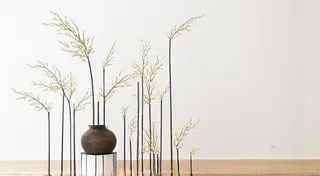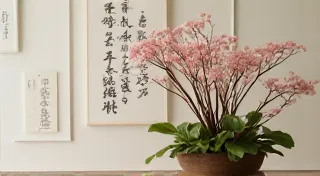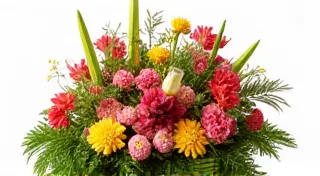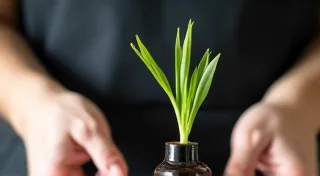Ikebana as Meditation: Cultivating Mindfulness Through Flower Arranging
Ikebana, the Japanese art of flower arranging, is often admired for its exquisite beauty and aesthetic appeal. However, beyond its visual charm lies a profound practice deeply rooted in mindfulness and meditation. While seemingly a craft focused on outward form, Ikebana can be a powerful tool for cultivating inner peace and presence. Let’s explore the meditative aspects of Ikebana and how it can help you find tranquility in the process of creation.
A Deep Dive into the History and Philosophy of Ikebana
Understanding Ikebana isn't just about learning how to place flowers in a vase; it's about appreciating the rich history and philosophy that underpins the practice. The art form originated in Japan over 600 years ago, evolving from Buddhist floral offerings to the sophisticated arrangements we recognize today. Initially, the arrangements were highly structured and symbolic, representing the universe and the interconnectedness of all things. Over time, Ikebana schools emerged, each with its own distinct styles and techniques. To truly appreciate the meditative aspects of Ikebana, it’s helpful to delve into the history of Ikebana and trace its evolution through the centuries.
The Philosophy of Space and Harmony
Unlike Western flower arranging, which often emphasizes abundance and fullness, Ikebana emphasizes space and asymmetry. The careful consideration of negative space – the empty areas around the flowers and branches – is crucial. This conscious use of space encourages a contemplative approach, drawing attention to the relationship between elements and the overall composition. Each stem, each leaf, is placed with intention, fostering a sense of harmony and balance, both in the arrangement and within oneself.
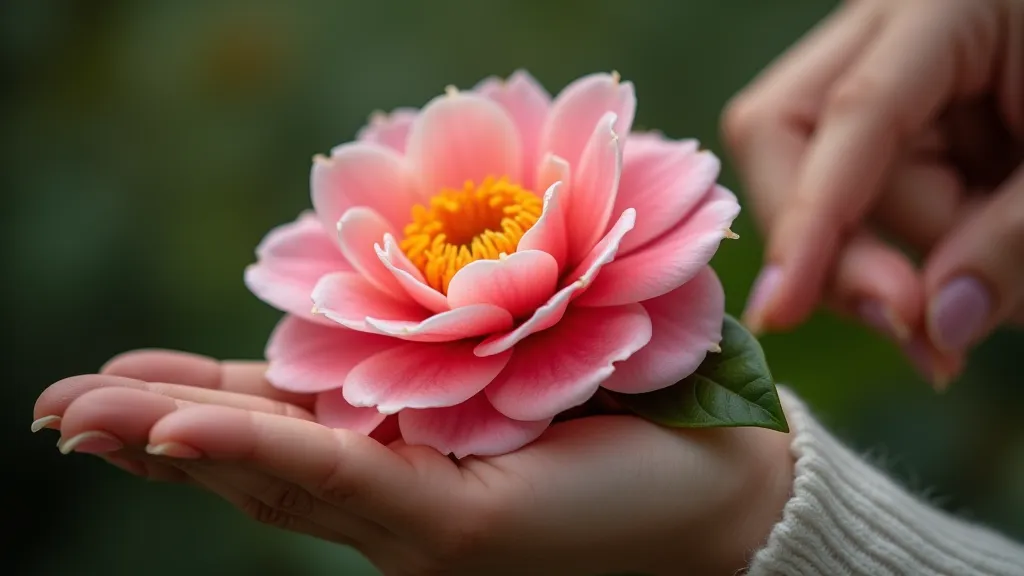
Selecting Materials: Flowers, Foliage, and Beyond
The materials you choose form the foundation of any Ikebana arrangement. Beyond the obvious beauty of blossoms, the art invites you to consider the character of branches, twigs, and even dried materials. The selection process itself can be a meditative experience. What speaks to you? What feels aligned with your intention for the arrangement? This mindful selection is key to unlocking the full potential of Ikebana. For those new to the art, learning about selecting flowers and foliage for Ikebana is a great place to start. Understanding the seasonal availability of different blooms, their symbolism, and how they complement each other can greatly enhance your creative journey.
Finding Presence in the Process
The act of arranging flowers in the Ikebana style demands focused attention. You’re not simply placing flowers; you are observing their lines, colors, and textures. You're considering their strength and fragility. The quiet focus required to select and position each element naturally quiets the mental chatter that often dominates our lives. This act of deep observation is inherently meditative. It encourages you to be present in the moment, fully engaged in the task at hand.
Embracing Imperfection: Wabi-Sabi and Ikebana
A key concept in Japanese aesthetics, wabi-sabi, embraces the beauty of imperfection, transience, and simplicity. This philosophy permeates Ikebana. It's not about creating a "perfect" arrangement; it's about appreciating the natural beauty of the materials and the unique story they tell. Recognizing and appreciating the inherent imperfections – a bent stem, a wilting leaf – can be a powerful lesson in acceptance and letting go. It encourages us to find beauty in the unexpected and to embrace the fleeting nature of life.
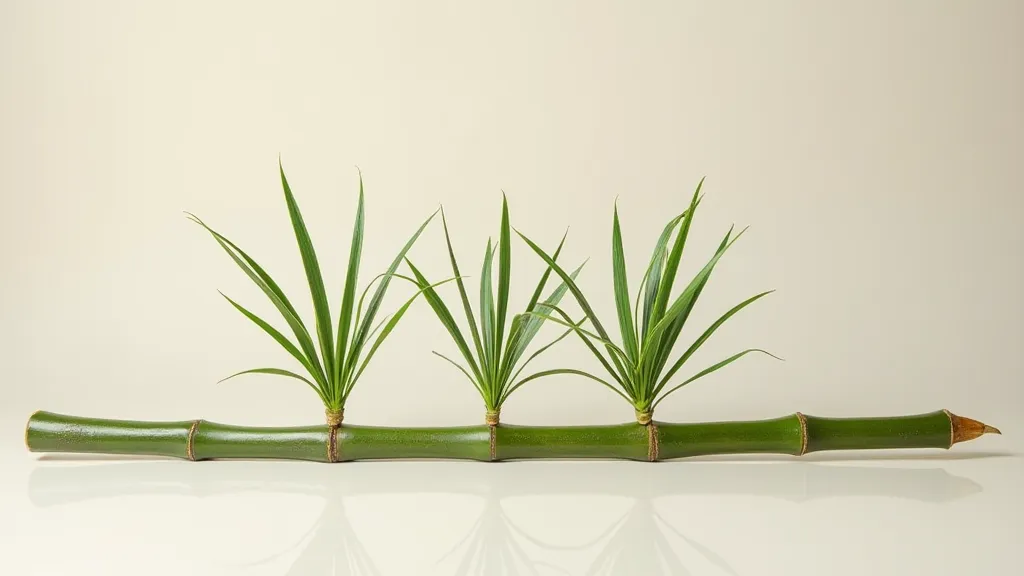
Working with Branches and Twigs: Extending the Arrangement
While flowers are undoubtedly the stars of an Ikebana arrangement, branches and twigs play a crucial supporting role. These elements introduce height, depth, and a sense of structure. They can represent strength, resilience, and the enduring spirit of nature. The careful selection and placement of branches requires a keen eye and a sensitivity to the overall composition. Consider the way they curve and bend, the way they interact with the flowers, and the message they convey. To master the art, exploring working with branches and twigs in Ikebana can be incredibly helpful. You'll learn about different types of branches, their structural properties, and how to incorporate them effectively into your arrangements.
Practical Steps to Meditative Ikebana
You don’t need to be an experienced Ikebana master to experience its meditative benefits. Here are a few simple steps to incorporate mindfulness into your flower arranging:
- Start with Intention: Before you even touch a flower, take a few deep breaths and set an intention for your practice. Are you seeking relaxation, clarity, or simply a moment of peace?
- Observe with Curiosity: Examine each flower and branch with a fresh perspective. Notice its color, texture, and form as if you’re seeing it for the first time.
- Move Slowly and Deliberately: Avoid rushing the process. Move slowly and deliberately, paying attention to your movements and your breath.
- Embrace the Impermanence: Remember that flowers are ephemeral. Enjoy their beauty while it lasts, and accept their eventual decay as a natural part of the cycle.
- Consider Seasonal Variations: Ikebana isn't just about the techniques; it's about understanding the beauty of each season. Different times of the year offer a unique palette of colors and textures. Exploring seasonal Ikebana will open your eyes to the ever-changing beauty of nature.
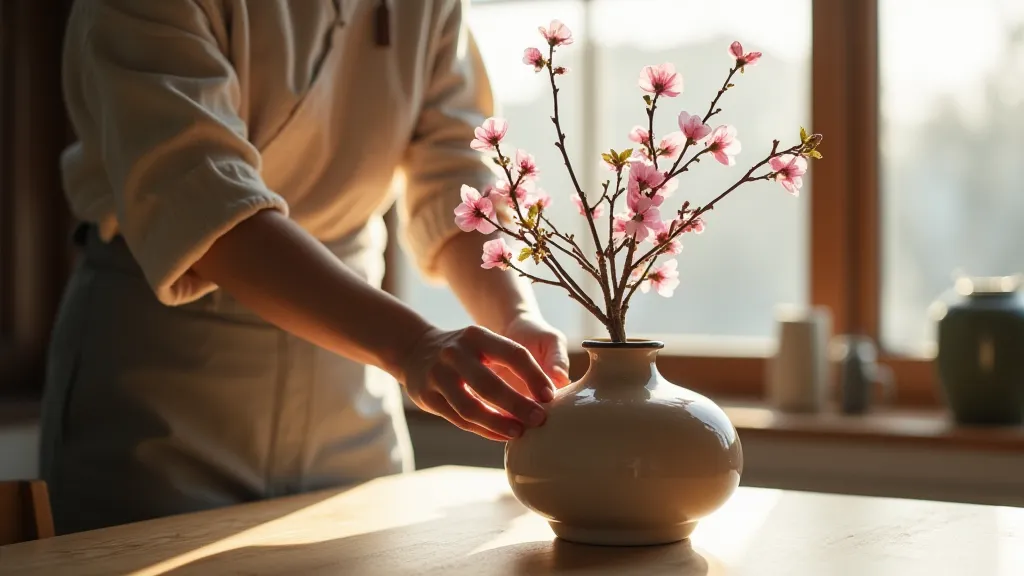
Beyond the Arrangement: Ikebana as a Lifestyle
The benefits of Ikebana extend far beyond the creation of a beautiful arrangement. It's a journey of self-discovery, a path to cultivating mindfulness and finding moments of peace amidst the chaos of everyday life. By embracing the principles of space, harmony, and wabi-sabi, you can transform a simple act of flower arranging into a profound and enriching meditative practice. It's more than just arranging flowers; it's about cultivating a deeper appreciation for beauty, impermanence, and the interconnectedness of all things. The intentionality and focus you develop through Ikebana can spill over into other areas of your life, bringing a sense of calm and presence to your daily routines.
